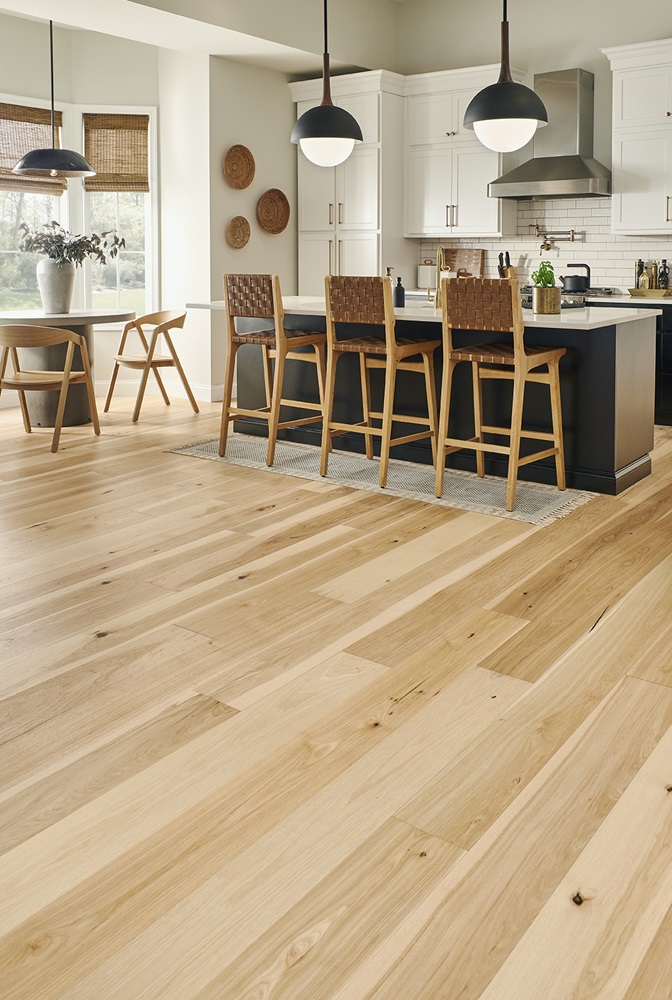Hardwood Ins and Outs
Hardwood Ins and Outs

It’s been almost a full year since the initial lockdown from the start of the pandemic and you’re still looking at your old floors thinking… IT’S TIME. You’ve spent many years with your old floors, you’ve become great friends, you’re even on a first name basis! As a matter of fact, you know exactly HOW many scratches, dents, and missing pieces are gone from your old floors. However, it’s time to part ways and bring in the new! Hardwood flooring is your final decision and you can’t wait to begin the process, knowing that new flooring will change the whole appearance of your home. However, shouldn’t you also have a basic understanding of how humidity affects wood flooring? Understanding this will help you maintain your floors and enjoy their natural, long lasting beauty for years to come.
Wood is considered to be hygroscopic, which means that wood absorbs and attracts moisture from the air. Understanding that wood easily absorbs moisture from the air, or from within the environment, is the first step in understanding that wood will also change in size.
On the flip side, wood flooring is also affected when it dries out. Hardwood floors react to moisture and various regions of the country. Hardwood floors will expand and contract according to the region in which you live. If you live in a region with arid climates, your hardwood will react differently than someone who lives in a region subject to seasonal high humidity levels. And if you live in the city of Cincinnati, you could have sunny, hot weather one day, and 10 inches of snow the next!
Seasons also affect hardwood floors and their moisture levels. In the wintertime, homes are heated and the air is dry. Therefore, your hardwood floors release moisture and contract. You might see gapping between the planks when this happens. This is normal and it is important for the flooring contractor to educate homeowners what they may experience. To help eliminate gapping, it’s essential to control and monitor the air humidity levels during wintertime to avoid these types of separations.
In the summertime, indoor humidity can rise to very high levels; therefore, the opposite occurs to the boards. The hardwood floors absorb the moisture from the air, causing the planks to expand. Think of the doors inside your home… when you close the door to your bedroom in the summertime, it ‘sticks’ and you have to apply just a tad of pressure to close the door. Excessive exposure to humidity will cause the wood flooring to cup. When cupping is noticed, the surface boards will concave, making the edges higher than the center of the boards. If unaddressed, the floors may buckle due to heavy expansion. To avoid cupping, maintain optimal humidity levels by keeping your air conditioner or dehumidifier running during hot, humid, summer months.
Now that you know what to expect in your climate region and when seasons change, it’s important to know if your flooring contractor is doing his/her due diligence in getting your hardwood floors installed properly. When you purchase your hardwood floors, the hardwood will come in generally around 6% - 9% moisture content. The flooring contractor should come to your home prior to installing to measure the amount of moisture in your home. He/she should also make sure that your home will have stable conditions before installing.
After measuring for moisture content and your home conditions are deemed stable, the wood will be delivered to your home to ‘acclimate.’ Acclimation allows the hardwood to adjust to the interior conditions of your home to achieve balance and stability to avoid shrinking, swelling, or cupping. Once the hardwood has acclimated accordingly and has been properly installed, make sure that your flooring contractor explains proper ongoing maintenance so that you can enjoy your new hardwood floors for years to come!
